Imagine the aroma of freshly roasted coffee filling your coffee shop, drawing in customers and setting the stage for a perfect cup. That dream can quickly turn into a nightmare if your commercial coffee roaster isn't up to par.
Ever heard the horror stories of a roaster fire or spoiled coffee beans due to inadequate maintenance? Trust us, you don't want to be in those shoes.

Your commercial coffee roaster is more than just a machine; it's the heart and soul of your coffee business. Keeping it in peak condition isn't just a good practice—it's a lifeline for your livelihood.
Serving as your comprehensive manual for all things related to commercial coffee roaster upkeep, this guide covers everything from daily cleaning tasks to monthly maintenance schedules. Remember, a well-maintained roaster is your ticket to consistently excellent, freshly roasted coffee that keeps customers coming back for more.
Importance of Regular Maintenance

When it comes to the coffee business, your commercial coffee roaster is the linchpin of your operation. But how do you ensure that this crucial piece of equipment stays in top form? It all depends on regular cleaning and maintenance, and it offers the following benefits:
Investing Time for Longevity
Your commercial coffee roaster isn't just a piece of equipment; it's a long-term investment. Experts recommend keeping a log of your machine's operational hours to plan preventative maintenance effectively. This proactive approach ensures that your roaster remains a reliable asset for years to come.
Mastering the Perfect Roast Through Peak Performance
The quality of your brew hinges on your roaster's performance. Seasoned technicians emphasize the importance of maintaining obstruction-free airflow. A simple yet crucial step like cleaning the chaff collector every 3 to 5 roasts can make all the difference, ensuring your machine runs smoothly and your coffee roasts evenly.
Consistency in Every Cup
Your customers come to you for a consistently great coffee experience. To meet this expectation, it's essential to maintain a clean cooling tray. Experts advise cleaning it daily to ensure that each cup of coffee meets your high standards.
The Financial Wisdom of Regular Maintenance
While it may seem like an added expense, regular maintenance is actually a financial safeguard. Neglecting your machine can lead to expensive and often irreversible damage. Proactive maintenance is your best defense against these costly disruptions.
Prioritizing Safety in Your Roastery
Safety should never be an afterthought in any business, especially in coffee roasting. Regular inspections and timely repairs are crucial for mitigating risks like electrical malfunctions and fires, ensuring a safe working environment for everyone involved.
By adhering to these industry-backed practices, you're not merely maintaining a machine; you're elevating your entire coffee roasting operation.
Cleaning Procedures for Your Commercial Coffee Roaster
Maintaining a commercial coffee roaster is akin to keeping a high-performance car in top shape; it demands regular attention and specific procedures. A clean roaster ensures that your coffee beans roast evenly, your machine operates efficiently, and you avoid potential hazards like roaster fires. Here, we delve into why it's essential to adhere to daily, weekly, and monthly cleaning routines.
Daily Cleaning Routine for a Fresh Start Every Day
Cleaning on a daily basis is crucial for preventing the buildup of coffee oils, coffee dust, and chaff, which can affect the quality of your freshly roasted coffee and even pose a fire hazard.

Materials needed: Soft brush, damp cloth, and a waste bin for chaff.
Procedures:
-
Turn off and Unplug the Machine: Safety first. Always make sure the machine is off and unplugged before you start cleaning.
-
Remove Coffee Residue: Use a soft brush to remove any coffee grounds from the roaster and surrounding areas.
-
Clean the Cooling Tray: Wipe down the cooling tray with a damp cloth to remove coffee oils and residue.
-
Empty the Chaff Collector: Remove and empty the chaff collector to prevent any fire hazards.
-
Wipe Down the Exterior: Use a damp cloth to wipe down the machine's exterior.
Weekly Cleaning Routine for Long-Term Efficiency
Weekly cleaning ensures that your machine's airflow is unobstructed and all components are in good condition, contributing to long-term efficiency and reducing the need for more frequent cleaning.

Materials needed: Vacuum cleaner, specialized exhaust cleaner, food-safe sanitizer.
Procedures:
-
Inspect Airflow: Make sure the airflow is unobstructed by using a vacuum cleaner to remove any built-up particles.
-
Check Belts and Chains: Inspect for any signs of wear and tear.
-
Clean the Exhaust System: Use a specialized cleaner to remove any build-up in the exhaust system.
-
Sanitize the Hopper: Use a food-safe sanitizer to clean the hopper where the green coffee beans are loaded.
Monthly Cleaning Routine for Peak Performance
Monthly cleaning is essential for deep cleaning areas that accumulate long-term buildup. It also allows you to calibrate and inspect essential components, ensuring peak roasting performance.
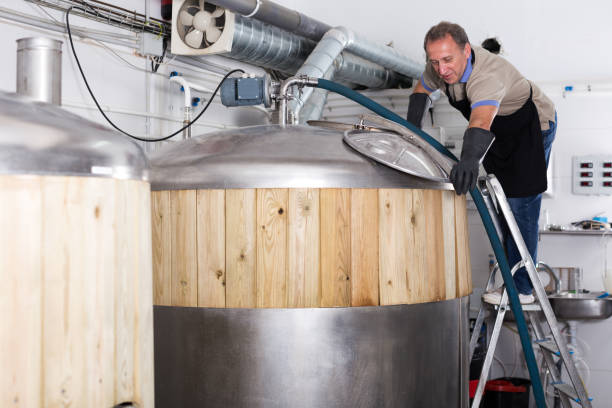
Materials needed: Specialized roaster cleaner, food-safe lubricant, electrical tester, calibration tools for thermometers and gauges.
Procedures:
-
Deep Clean the Drum: Use a specialized roaster cleaner to deep clean the drum.
-
Lubricate Moving Parts: Apply food-safe lubricant to all moving parts to ensure smooth operation.
-
Inspect Electrical Components: Check all electrical connections and components for wear or damage.
-
Calibrate Thermometers and Gauges: Ensure all thermometers and gauges are accurate for optimal roasting conditions.
Regular Inspections for a Smooth-Running Roastery
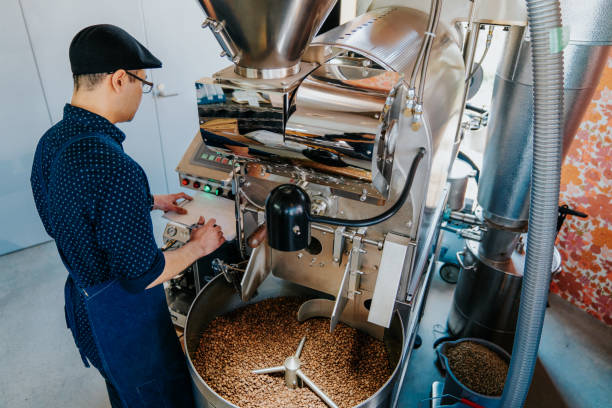
Regular inspections are an integral part of maintaining a commercial coffee roaster. They help you identify potential issues before they escalate into costly repairs or safety hazards. In this section, we'll guide you through what to inspect, how often, and the tools you'll need.
What to Inspect
-
Airflow System: Check for obstructions and clean as needed.
-
Belts and Chains: Look for signs of wear and tear.
-
Exhaust System: Inspect for build-up and clean using a specialized cleaner.
-
Electrical Components: Examine all connections and components for wear or damage.
-
Thermometers and Gauges: Ensure they are accurate and calibrated.
How Often to Inspect
-
Airflow System: Weekly
-
Belts and Chains: Monthly
-
Exhaust System: Weekly
-
Electrical Components: Monthly
-
Thermometers and Gauges: Monthly
Tools Needed for Inspection
-
Vacuum Cleaner: For cleaning the airflow system.
-
Specialized Exhaust Cleaner: For the exhaust system.
-
Electrical Tester: For checking electrical components.
-
Calibration Tools: For thermometers and gauges.
By incorporating these regular inspections into your maintenance routine, you're taking proactive steps to ensure the longevity and efficiency of your commercial coffee roaster.
Parts Replacement for a Hassle-Free Operation

Keeping your commercial coffee roaster in top condition often involves replacing worn or damaged parts. This section will guide you through when to replace parts, which parts commonly need replacement, and where to find these essential components.
When to Replace Parts
Timing is crucial when it comes to parts replacement. Here are some general guidelines:
-
Immediately: If a part is visibly damaged or broken.
-
After Specific Milestones: Some parts have a set lifespan, usually measured in operational hours. Refer to your machine's manual for this information.
-
Performance Decline: If you notice a drop in the machine's performance, it might be time to replace certain parts.
Types of Parts That Commonly Need Replacement
-
Belts and Chains: These can wear out over time and may need to be replaced annually.
-
Heating Elements: These are crucial for roasting and may need replacement every couple of years.
-
Bearings and Bushings: These smaller parts can wear out and may need to be replaced every six months to a year.
-
Sensors: Temperature and pressure sensors can malfunction and should be replaced as needed.
Where to Buy Replacement Parts
-
Manufacturer: Always the safest option, as you'll get parts specifically designed for your machine.
-
Specialized Retailers: Stores that focus on coffee roasting equipment often carry a wide range of parts.
-
Online Marketplaces: Websites like Amazon or specialized coffee equipment sites can be convenient but ensure the parts are compatible with your machine.
By staying ahead of parts replacement, you're ensuring that your commercial coffee roaster remains a reliable asset, contributing to the quality of your coffee and the success of your business.
Common Issues and How to Spot Them for a Trouble-Free Roasting Experience
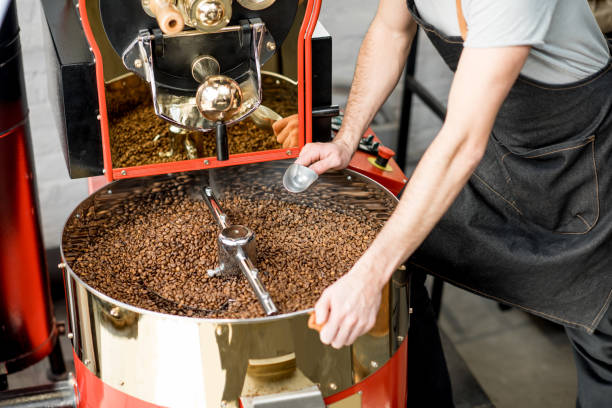
Operating a commercial coffee roaster in your coffee shop is not without its challenges. From maintenance to cleaning, there are various aspects to keep in mind for a smooth roasting experience. Below, we list common issues, signs to look out for, and immediate actions to take.
Roaster Fire
-
Signs: Excessive smoke, strong burning smell
-
Immediate Action: Turn off the roaster, unplug it, and use a fire extinguisher if necessary.
-
Prevention: Regular cleaning of the chaff collector and cooling tray to remove coffee dust and oils.
Reduced Airflow
-
Signs: Slower roasting times, unevenly roasted coffee beans
-
Immediate Action: Check the exhaust fan and clean any obstructions.
-
Prevention: Weekly tasks should include inspecting airflow and cleaning the exhaust system.
Inadequate Maintenance
-
Signs: Noisy operation, frequent breakdowns
-
Immediate Action: Consult your maintenance log and schedule immediate servicing.
-
Prevention: Adhere to a strict maintenance schedule, including monthly tasks like deep cleaning and calibrating thermometers.
Coffee Oils and Residue Builds
-
Signs: Off-flavors in your freshly roasted coffee, sticky or dirty roaster
-
Immediate Action: Perform a deep clean using specialized cleaners.
-
Prevention: Daily cleaning of cooling trays and weekly cleaning of the exhaust system.
Flammable Material Buildup
-
Signs: Strong odors, visible buildup in chaff collection bin
-
Immediate Action: Empty and clean the chaff collector and cooling sieve.
-
Prevention: Use a soft brush and compressed air for thorough cleaning.
Electrical Issues
-
Signs: Flickering lights, unresponsive controls
-
Immediate Action: Turn off and unplug the roasting machine, then consult a professional.
-
Prevention: Regular inspection of electrical components as part of your monthly tasks.
Wear and Tear on Moving Parts
-
Signs: Sluggish performance, squeaking noises
-
Immediate Action: Lubricate all moving parts like drum bearings.
-
Prevention: Regularly check belts and chains for signs of wear.
To avoid these common issues and ensure that your coffee roaster is always in optimal condition, stay proactive and adhere to a well-planned maintenance schedule. Keep in mind that a clean roaster is essential for producing high-quality coffee beans and maintaining the reputation of your cafe.
Safety Precautions for a Secure Roasting Environment
When it comes to maintaining a commercial coffee roaster, safety should never be compromised. This section will guide you through the essential safety gear to use, what to avoid during maintenance, and emergency procedures to follow for a secure roasting environment.
Safety Gear to Use
-
Safety Goggles: To protect your eyes from dust and debris.
-
Heat-Resistant Gloves: To handle hot components safely.
-
Face Mask: To avoid inhaling any fumes or fine particles.
-
Non-Slip Shoes: To prevent slips and falls in the work area.
What to Avoid During Maintenance
-
Working on a Hot Machine: Always allow the machine to cool down before starting any maintenance work.
-
Using Water Near Electrical Components: This can lead to electrical shocks or malfunctions.
-
Skipping Safety Checks: Never bypass safety features or alarms on the machine.
-
Working Alone: Always have someone aware that you are performing maintenance, especially for tasks that involve electrical or mechanical adjustments.
Emergency Procedures
-
Fire: Use a Class K fire extinguisher suitable for grease fires and call emergency services.
-
Electrical Shock: Turn off the main power supply and seek immediate medical attention.
-
Chemical Spills: Use appropriate spill kits and follow Material Safety Data Sheet (MSDS) guidelines.
-
Injury: Administer first aid as needed and seek medical attention.
FAQs
1. How often should I clean my commercial coffee roaster?
It's advisable to have a daily, weekly, and monthly cleaning routine. Daily cleaning involves basic tasks like removing coffee residue and emptying the chaff collector, while weekly and monthly routines involve more in-depth cleaning and inspections.
2. What are the signs that my coffee roaster needs maintenance?
Common signs include uneven roasting, overheating, unusual odors or smoke, strange noises, and electrical malfunctions. If you notice any of these, it's time for immediate inspection and possibly maintenance.
3. Can I perform maintenance tasks myself, or do I need a professional?
Basic cleaning and minor inspections can generally be done by the owner or employees. However, for more complex tasks like electrical inspections or parts replacement, it's advisable to consult a professional.
4. What safety gear is essential for performing maintenance tasks?
Safety goggles, heat-resistant gloves, a face mask, and non-slip shoes are essential safety gear when performing maintenance tasks on your commercial coffee roaster.
5. Where can I buy replacement parts for my commercial coffee roaster?
Replacement parts can be purchased directly from the manufacturer, specialized retailers, or online marketplaces. Always ensure the parts are compatible with your specific machine model.
Final Thought
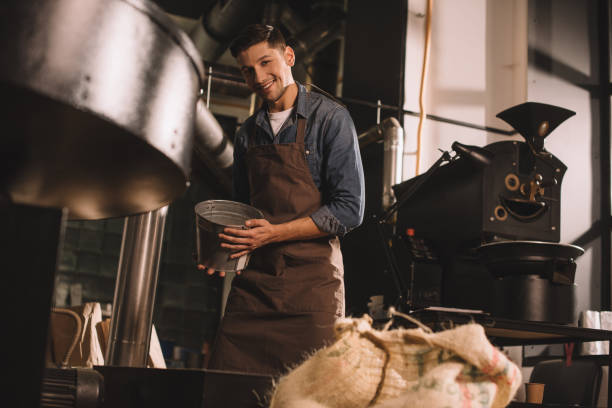
You now have a complete roadmap for taking care of your commercial coffee roaster, the vital engine behind your coffee enterprise.
Armed with insights on everything from essential upkeep to cleaning protocols, regular checks, swapping out parts, and ensuring safety, you're all set to keep your machine running at its best. And remember, a well-maintained roaster is your secret weapon for delivering exceptional coffee that keeps customers coming back.
If you're in the market for a new commercial coffee roaster or looking to upgrade, we invite you to check out our range of high-quality commercial coffee roasters designed to meet the needs of coffee shop owners and roastery operators like you.
So, don't just read—take action. Implement these best practices into your maintenance routine today and elevate your coffee roasting operation to new heights. Your business, your team, and your customers will thank you.



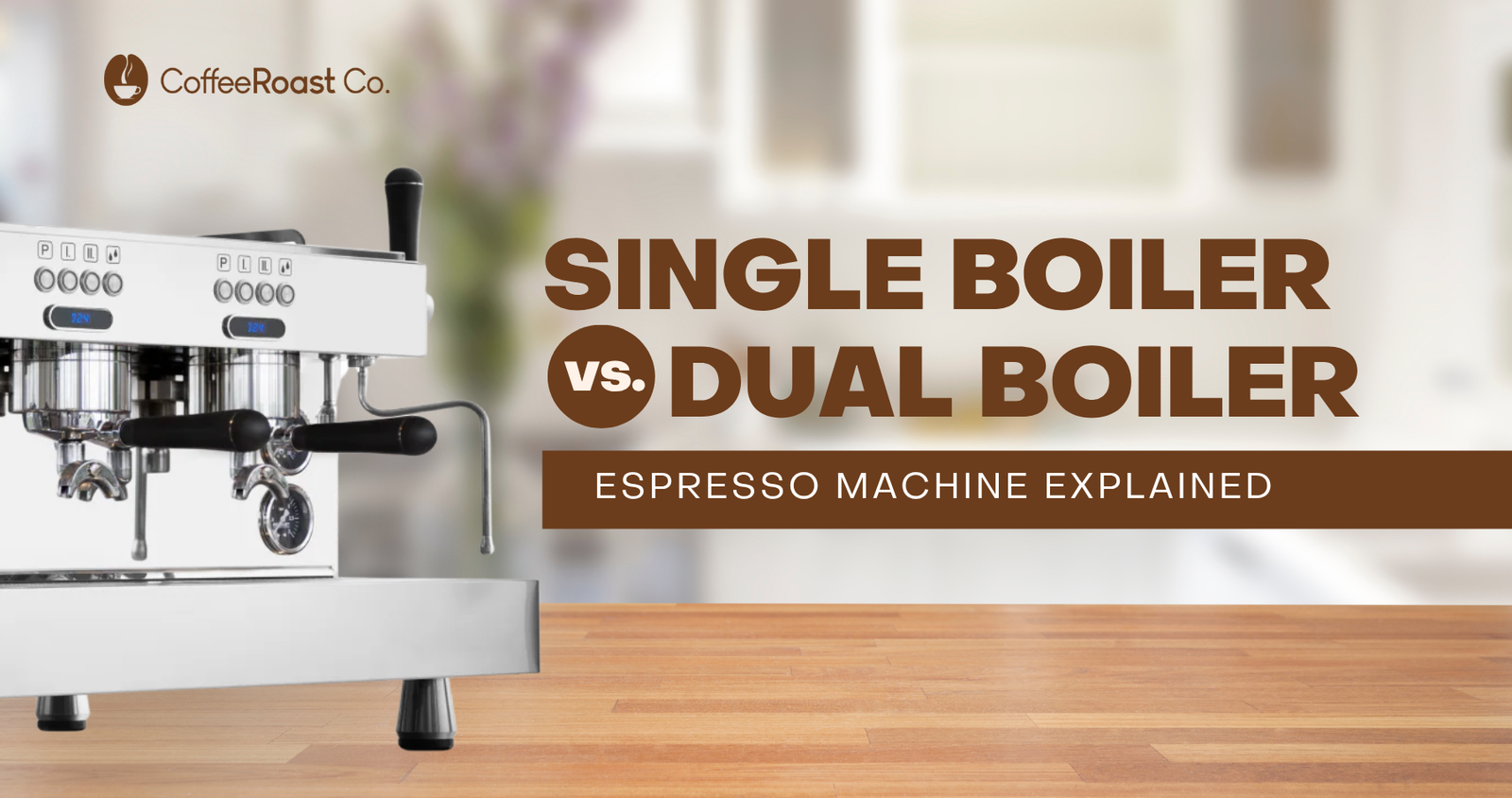

Dejar un comentario